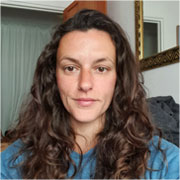Like many mental and physical illnesses, addiction can cause changes in the brain and body that impact functioning and may cause long-lasting effects. As with other illnesses, addiction can be treated with various medications and therapeutic approaches.

How does substance abuse affect the brain?
Regular substance use can cause significant effects, changing the activity and functioning of the brain. Higher doses and longer duration of use contribute to more long-lasting effects that may be more difficult to repair or change.
Brain circuits are aspects of normal psychological and physiological functioning that are regulated by pathways in the brain. The brain circuits impact experiences, such as emotion regulation, pleasure, and movement. These pathways include neurons, which communicate with one another around the brain via neurotransmitters.
Different substances can have various effects on these pathways, preventing normal communication between neurons. This can result in many different physical and emotional effects and impairments in functioning.
Substance use can alter an individual’s ability to make decisions, recognize fear or detrimental consequences, regulate emotions, and feel pleasure from healthy behaviors. These altered experiences are caused by abnormalities in brain functioning that aren’t able to work effectively due to substances.
How a drug-affected brain works
Different drugs can have different effects on the brain, although they all tend to impact neurotransmitter activity.
For example, heroin and other opioids mimic naturally occurring neurotransmitters. This causes the brain to produce less of the natural neurotransmitters to accommodate the change in levels. This can lead to abnormal messages being communicated between neurons due to the presence of unnatural neurotransmitters.
Additionally, heroin also impacts the brain stem, which influences important functions such as breathing and sleeping. This is why heroin can cause life-threatening effects, especially in overdose.
Other drugs, such as amphetamines and cocaine, cause the brain to over-produce natural neurotransmitters, leading to excessive and disrupted activity in the brain.
With regular and prolonged drug use, the brain adapts to the increase in neurotransmitter activity by reducing neurotransmitter release. This can lead to an inability to feel pleasure without the drug. It can also contribute to psychological effects such as low mood and anxiety, as the brain no longer creates the neurotransmitters required for mood regulation.
Areas of the brain affected by drug abuse include:
- Prefrontal cortex: Scans show decreased activity in the prefrontal cortex of regular drug users. This area of the brain is responsible for functions such as impulse control and decision-making. This causes a reduction in the addicted person’s ability to reduce drug use or recognize and react to potential consequences of continued use.
- Basal ganglia: The basal ganglia is a key part of the reward circuit, impacting motivation and the pleasure experienced from activities such as exercise and eating. Regular drug use reduces the sensitivity of the basal ganglia, causing a reduced ability to experience pleasure from anything other than drug use.
- Amygdala: The amygdala is involved in functions such as mood and stress regulation. With regular drug use, the sensitivity of the amygdala increases, contributing to mood-related withdrawal symptoms.
- Other circuits: Not only does drug use impact the reward circuit but it is also thought to impact various other brain circuits. Drug use has been found to cause impairments in functions such as learning and memory abilities, inhibition, self-awareness, and environmental awareness.
Drugs and dopamine
Dopamine is the primary neurotransmitter involved in the reward circuit. Activities such as eating, sexual activity, playing games, and exercise cause a release of dopamine and a feeling of pleasure.
The role of dopamine is to increase the chance of these activities being repeated to produce further pleasure. It does this by creating neural pathways, reinforcing the connection between the activity and pleasure feeling, which helps to form a habit of repeated activity.
Substances can cause bursts of dopamine up to ten times larger than these activities. As such, the connection between drug use and pleasure is created and reinforced more quickly and robustly. This causes the individual to repeat the activity of drug use to recreate the feeling of pleasure because their brain is instructing them to do so.
Additionally, environmental cues can trigger this instruction. If a certain place, person, or situation has been involved in the formation of the connection between drug use and pleasure, this same cue can trigger a craving. This can occur even after years of abstinence because the cue triggers the brain to recall this connection.
Many substances impact dopamine, although they have varying effects on this neurotransmitter. Heroin and other opioids, nicotine, cocaine, alcohol, and amphetamines all influence the levels and activity of dopamine in the brain to different extents.
Drugs and serotonin
Serotonin is a neurotransmitter that has many functions, including mood and emotion regulation and is known to be involved in the development of mental illnesses such as anxiety and depression. Serotonin is also likely impacted by drug use, although this connection is less clear.
As there are numerous serotonin receptors in the brain, the connection between substance use and serotonin activity is not entirely understood and requires further study and investigation. However, it is thought that different substances have different effects on serotonin, inhibiting or increasing levels in various areas of the brain and to different extents.
Serotonin is thought to influence addictive behavior, contributing to the feeling of euphoria or ‘high’ of the substance, therefore reinforcing use. Alcohol, amphetamines, opioids, and marijuana are found to increase serotonin levels to varying degrees. It is thought that these effects contribute to withdrawal symptoms relating to mood changes. Abuse of serotonin drugs such as antidepressants or MDMA can also lead to serotonin syndrome.
Why are some drugs addictive and others are not?
Some drugs are more addictive than others because of the likelihood of the development of tolerance and dependence. The impact of a substance on the brain and normal functioning can influence how likely a tolerance and dependency will develop.
With repeated use, tolerance develops, which means that greater doses are required to create the same feeling of pleasure. Higher doses are also likely to contribute to physical dependence, which results in severe withdrawal symptoms when the substance is not used.
If a substance causes an extreme high and a severe drop in pleasure, it is more likely that it will be used in greater quantity and regularity, to maintain the ‘high’ and prevent withdrawal symptoms.
Substances such as alcohol, heroin, nicotine, methamphetamine, and cocaine are likely to create dependence quickly. This is because the feeling of pleasure wears off quickly after use, requiring another dose soon after, contributing to repeated and increasing use, and the formation of an addiction.
Substances that are considered non-addictive may be less likely to cause severe withdrawal symptoms, therefore making them less likely to be misused and abused. However, it can still be challenging to stop the use of these substances, due to fear or a belief that they are needed, which is considered an emotional or mental addiction.
How therapy and medication rewire the brain in recovery
As addiction is strongly related to abnormal and damaged brain functioning, addiction treatment must focus not only on abstinence but also on the repair of brain circuits and pathways. A combination of abstinence and appropriate treatment can result in the partial or full repair of brain functioning.
Medications
Various medications can be used in the treatment of addiction recovery. This includes medications that help to decrease the severity of withdrawal symptoms, reduce cravings, and prevent the risk of relapse.
Many of these medications stimulate or bind to receptors in the brain to some degree. This can help to make the process of detoxification and withdrawal more manageable, helping to prevent the urge to use.
Therapies
Different types of therapy can be used to help alter thought and behavior processes associated with addiction. One type of therapy that has shown positive effects with this is dialectical behavior therapy (DBT). DBT was created to treat borderline personality disorder but has since been utilized in the treatment of various conditions and addictions.
DBT can help individuals accept and change the emotional and physical pain associated with their substance use. It can also improve coping skills and help with working towards attainable goals. DBT can promote and achieve abstinence and sustained recovery by altering the harmful thoughts, emotions, and behaviors that contribute to substance abuse.
Healthy behaviors
Holistic approaches to treatment involve the use of techniques relating to exercise, nutrition, interpersonal relationships, and mindfulness. Implementing these healthy behaviors can help to rebuild the brain pathways that create pleasure naturally that have been damaged by drug use.
These approaches can have a positive impact on brain health and functioning. Additionally, they can improve mental and physical well-being, further contributing to the recovery process.
Neurofeedback
Neurofeedback, also known as EEG biofeedback, involves the use of a device that reads and monitors brain waves. This helps the trained expert recognize which pathways have become damaged and focus on improving these areas specifically.
The expert provides advice to the client to target these specific pathways, helping them to train and improve brain activity and programming through self-regulated practice. This can help to repair pathways and abnormal activity that contributes to addiction, reducing symptoms and improving recovery.


-guide-detail.jpg?v=1722503307)
-guide-detail.jpg?v=1722503025)
-guide-detail.jpg?v=1722501997)